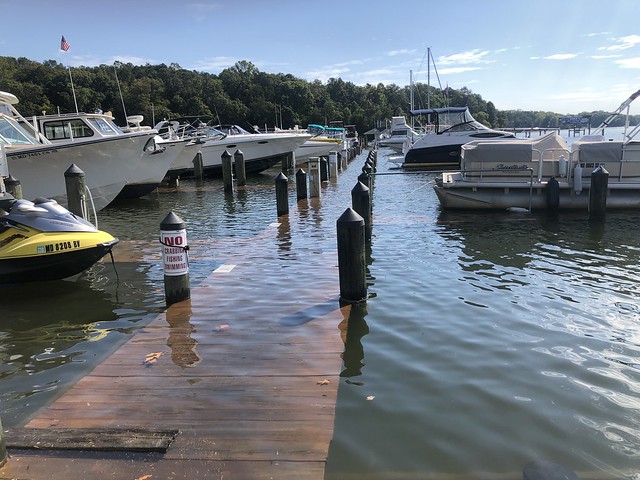While the fight against the virus is far from over, my thinking over the past days has been mainly focused on what the world after COVID-19 will look like. Although it’s certainly not guaranteed, my assumption is that we will eventually find a vaccine that will work for most people, but that until then we can’t go back to normal. That will be a period of constant testing, wearing face masks while outdoors, social distancing and likely more temporary lock downs.
But even after we have a vaccine the world will be a very different one from just 3 months ago. In this post I will focus on things that are visible to everyone. I won’t go into issues such as less globalization and onshoring (disrupted supply chain issues, higher prices for many products), the possible collapse of the financial system (because of unlimited printing of money), or the effects on the real estate market.
Work and education
One thing that has become clear over the past couple of weeks is that many jobs can be performed from home. You don’t necessarily need to drive to an office anymore to do all your work, many things you can also do from a remote location. My feeling is that this will have a big impact on the world after COVID-19: rent is expensive in many locations, so there is a real incentive for companies to start looking at letting people work 2-3 days a week from home. Some jobs may only require people to come in once every 1-2 weeks for a few hours. This means that office space requirements will be a lot less than before 2020. The result: a lot of empty office space that can be used for other purposes. But also the demand for more dedicated spaces at home to work and to take video meetings from. As a positive side effect, I think dress codes will be more relaxed as well. Ties already disappeared almost everywhere, but after working from home for many weeks the next thing to go will be the suit. I have been wearing jeans and a jacket for years at work, that might be the new normal as well (the sweatpants will hopefully remain at home).
The same is true for education. Within a few weeks all schools and universities had to change to a completely online curriculum. And surprisingly most of them managed! Sure, the solutions are not perfect, but it suddenly becomes clear that there may be different methods than teaching 20-30 students in a class room with a dedicated teacher, or teaching hundreds of students in a university auditorium. I believe new schools will be developed that rely less on in-person interaction, and more on distance learning with very good teachers and with the help of AI and (eventually) virtual reality. Traditional schools won’t disappear, but I believe that the majority of the classes can be taught in a different, more scalable way.
For example, an extremely good teacher can develop an online course for several schools and have 1-2 hours per week per school to meet with the students in a group setting or for one-on-one meetings. She can work with (less qualified) teaching assistants who can help students with questions and who can do the examinations. Schools can save a lot of money on teachers, students only get taught by the best teachers, and schools may actually need less physical real estate because students can do most of the courses from home. Something similar will be the case for universities, where you can literally enroll in a course with the best professors in your field. This will take time to develop, but I believe it will be unstoppable now that educational institutions have seen that online education can replace in-person teaching.
Entertainment
A sector that has been hit very hard by the virus is the entertainment sector: restaurants, bars, cinemas, sports facilities, and concert halls. What they have in common is that they are currently all closed and therefore most of them may be bankrupt before we have found a vaccine for the virus. That means that even if we can go back to a new normal, most of your favourite hangouts may not be there anymore. Some may start over again with different owners, but because of social distancing they can’t fully operate until a vaccine has been found or until most people have antibodies.
Restaurants will likely have less tables and these tables will be further away from the others. There might be limits to the number of diners, which will make dining a less intimate affair. Waiters may not come to the table anymore to take your order and food will be put close to, but not on, the table. Likely the delivery of meals will remain an important part of their future business. Bars will possibly have to ask patrons to keep a distance from others, which makes it unlikely that many people would want to go there anymore. Cinemas might not sell all chairs, but leave empty chairs between customers, which will make the business unprofitable. So they need to come up with new business models in order to stay alive. Maybe we’ll see more private screenings or even screening of movies at home that are still in the cinemas, for much higher prices (maybe people might pay a few hundred dollars to watch the latest James Bond in the first week after its release at home). And the good old drive-in cinemas might see a come back because of COVID-19.
Sports events with live audiences will likely not be back until we will have a vaccine. Large groups of people are the perfect breeding ground for the virus. So either sports competitions will have to be stopped for a year or they will be played without public. Formula One is already more of a TV sport than one to watch live, but the same may happen to other sports as well. This might mean that all players in a league would have to stay quarantined during the whole season, simply because one player could infect not only his own team but also other teams.
Shopping
Going shopping in a mall may be a thing of the past. Some will still be there, but many will lose a large number of their tenants during the lockdown. Even after the quarantine phase is over most people won’t have as much to spend as before, so they will not buy new shoes, clothes, or electronics, leading to the closure of even more shops. Maybe flagship stores will remain, places where you can see the products before ordering them online.
I believe people will continue to shop online, also after the virus has been contained. It’s just so much easier: I had never ordered groceries online before the virus hit, but after just a few week I already prefer it over going to a supermarket. Amazon is not able to handle all its orders right now, but in the world of shopping they will be the big winner of the virus.
Travel (business and pleasure)
I used to travel a lot and although I cut down travel by at least 50% last year (partly because of climate change), I am now for the first time in 25 years experiencing a business life without air travel. I have not taken any flights yet this year and I actually like it. No more wasting time in airports or on delayed flights, and especially no more constant jet lags. Zoom has replaced all of my in-person meetings and it works surprisingly well. I think a lot of companies will realize that you can get a lot of business done through online tools as well, so I believe business travel will not be the same anymore. The same is true for conferences, many are more a perk to keep employees happy than a place where you learn something new. Of course it’s good to meet people face to face, but seeing the same people at every conference (as was the case in the Bitcoin world) does not add much value either. So I believe that even after COVID-19 there may be less conferences and many of them will be at least partially virtual.
Tourism will change even more in my opinion. Until there is a vaccine I think we may see either 14-day quarantines after every international flight or there will be COVID-19 tests both before boarding and after landing. People with antibodies may be able to travel more freely, but for now that will be a very small minority of the people. Just for that reason, I believe international recreational travel as we know it won’t be back for until the summer of 2022. I think the era of cheap tickets and package deals me be over as well: many low cost airlines will likely not survive the current lock down and the period until there will be a vaccine. So there will be less competition, the national airlines (saved by governments) will suddenly have many of the tourist routes to themselves and they will not offer $99 flights anymore. I think even the regular flight tickets will be a lot higher, partly because airlines that are saved by governments might have to pay loans back so they have to be more profitable, and partly because there is simply less competition. Because demand will be down (there will be a lot less people that have money available for international holidays) I believe there will be a lot less flights as well. No longer will there be 10+ flights per day from Vancouver to China but maybe just 2 or 3. I think that’s a good thing and I hope this might help to solve the climate crisis as well.
Unemployment
The biggest effect of COVID-19 will be that many companies will not be able to survive the crisis. In many countries 20-30% of the working population may be unemployed a few months from now. That is unprecedented, at least in our lifetimes. I believe people are completely underestimating these numbers and their consequences. I am very worried about social unrest, especially in countries without good social security. I have been a big fan of Universal Basic Income, maybe this is the time that governments will finally give it a try. My view on this is that if they do start with UBI it won’t go away anymore.
Because so many people are laid off, many will not be able to pay their mortgage or other debts and will have a hard time surviving. They will only buy products they really need (mainly food), but won’t be spending anything on other products. No more new cars, no more holidays, no more new iPhones, but also no more nights out in bars or restaurants once they reopen. The indirect effects of this will be huge and will likely lead to a lot more bankruptcies and additional unemployment. I think we may not just see a recession but a real depression, similar to what happened in the 1930s. People will be forced to sell their boats, their second houses or even their cars just to survive, so there will be some real bargains for people with access to cash.
The new normal: better or worse?
The new normal won’t be as normal as some politicians make you believe. I think we will be facing a very different but also very difficult future. Most people will get through it and there will be many new opportunities, but it will get harder before it gets easier. Hopefully some good things will come from this as well. For example, after spending more time at home people may realize that spending time with family is more important than just work. Community and helping each other may suddenly become more important as well. Maybe it could even be the first step to realize that climate change is real and that we can fight it if we completely change our lifestyles. At least we now know that it is possible to change our consumption patterns, even if just for a short period of time. I am not optimistic about the next 12 months, but I do believe that as a society it could be a wake up call to change our lives.









